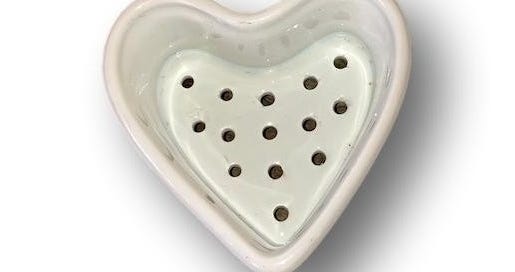Picture this - you arrive in France, pop over to a bistro, have a delicious feast and then obviously need to finish your meal with a sweet treat. You’re in the mood for something crunchy but when you check the dessert menu, all you see are really creamy, soft, fluffy desserts: mousse au chocolat, île flottante, soufflé, fromage frais, crême brulée… Have you ever wondered why that is? Personally, I hadn’t. That is, until I went on a deep dive on the mysterious Crêmet d’Anjou this past week.
I was back in France last week at my family home and spent a morning sifting through old cookbooks in bottom drawer in my kitchen while waiting for my Sancerre jam to reach temperature. I stumbled upon this cookbook I had never seen before (my dad had supposedly bought it for me at an estate sale, jackpot) and began flipping through the old fashioned, yellow hued photos. I was sending my superstar baker and pastry queen extraordinaire friend Nicola some photos of fun bakes until I found what looked like a very “me” dessert - Le Crêmet d’Anjou.

Full disclosure, I am partial to anything featuring egg whites. I love a meringue, an ile flottante, a soufflé, pavlova, angel food cake, an egg white omelette, you name it. This crêmet d’Anjou recipe featured two ingredients: creme fraiche and egg whites. I didn’t make it when in France but the moment I touched down in London, I had to know everything about this dessert and would be making it over the weekend. I didn’t realize there would be such a fascinating history behind soft French desserts in general so let’s get into it…
Louis XIV and His Gross Teeth
Le Roi Soleil, the Sun King, had a disgusting mouth, there’s no easier way to put it. Obviously oral hygiene back in the day wasn’t great but you’d think that maybe the King had a personal butler for the sole purpose of teeth brushing and overall cleanliness? But nope. He had cavities, rotting teeth, infected gums, you name it. Everything about it was so gnarly that he even created the discipline of dentistry specifically in France to help his case out with the edict, Expert pour les dents. Prior, barber-surgeons, the directors of bathhouses, were the ones to perform oral surgery as well as shave bears. Weird.

Here’s the thing, the French have always loved their food. Louis XIV saw food as a way to show off his wealth, power and eminence within and beyond the French court. He was extremely involved in bringing in new flavors, technology, and in creating menus for guests from around the world. He even had glacieres, ice “houses”, built in the late 1600s in Versailles and Trianon to keep food cold year round. By the year 1710, these cold fridge “houses” arrived in Anjou, the birthplace of this refrigerated dessert.
You may be wondering where I’m going with this but I promise this semi-gross history is officially done now and actually serves a delicious purpose. In his 40s, Louis XIV lost his first tooth and nearly died of sepsis. Due to his inability to chew food properly, chefs were determined to make things that he could not only eat but also enjoy - soft desserts.
The necessity to create soft foods as well as the new means of refrigeration changed French gastronomy forever. Please welcome to the stage - mousses, ice creams, sorbets, sweet yogurt, consommés, purées and crêmets, the star of today’s newsletter.
While the history of French soft desserts being tied to Louis XIV is not 100% confirmed by all historians, it’s a fun history that I choose to believe. Suit yourself and believe what you want to believe but the timeline is congruent and it’s a fun way to remember this cultural history.
Le Crêmet d’Anjou
Le Crêmet d’Anjou directly translates to Crêmet from Anjou, the region below. Crêmet itself is a word from said area signifying to whip cream just to the limit of it becoming butter. So it’s neeeearly butter, but not quite.
Curnonsky, the so-called Prince of Gastronomy in France claimed in 1921 that “le crêmet angevin est un régal des dieux. Nulle crème chantilly n’égale ce petit mulon mousseux, parfumé, onctueux et léger”, The crêmet angevin is a godly delight. No whipped cream equals this moussey, perfumed, onturous and light bite.
It’s light, delicate and usually eaten once the weather begins to warm up. This is due to its fresh flavor profile but also because the milk producing seasons being spring and summer. With spring nearly in sight (8 days!), this felt like the appropriate time to be eager and take a stab at making it.
Traditionally, the mold used to shape these was that of a “faisselle”. Turns out that back in the day, these were often times in the shape of a heart! Nowadays they come in yogurt shaped, cylindric plastic pots with holes in the bottom.


This specialty dish was long forgotten until Sophie Reynouard David-Auvray decided to write an entire book about it, “Le Crêmet d’Anjou: 300 ans d’histoire gourmande”, Le Crêmet d’Anjou: 300 years of delicious history.
After rumaging through archives and interviewing numerous chefs and cooks, she found that the most agreed standard recipe was the below:
Makes 4 Crêmets d’Anjou
– 120 g room temperature egg whites (3 to 4, depending on size)
– 240 g cold, whole liquid cream
– 20-50 g liquid sugar cane syrup
– 3-4 drops of organic lemon juice
– 1/2 vanilla pod
– 4 crêmet d’Anjou heart shaped molds (or any faisselle molds)
– 4 gazes (gauze compresses from the pharmacy, 20x20cm)
While this recipe looks especially delicious due to the addition of vanilla, it felt wrong not to try the 2 ingredient one I found in the recipe book at home. After testing a few ingredient variations + molds, this recipe is the one I liked best.
If you’d like to know more about it, the Crêmet d’Anjou has its literal own website. I’m obsessed with my country.
 Tiktok failed to load.
Tiktok failed to load.Enable 3rd party cookies or use another browser
I have gotten lots of messages about my cardigans in this video! First cardigan linked here and second set here.










Where I am in Canada we don't have whole cream, but our whipping cream is 33% which is close! I can't reliably find crème fraîche either (I think it was really pre-pandemic that I saw it last) so I might try making it on my own. I love reading your posts!